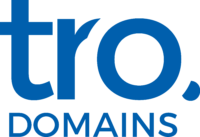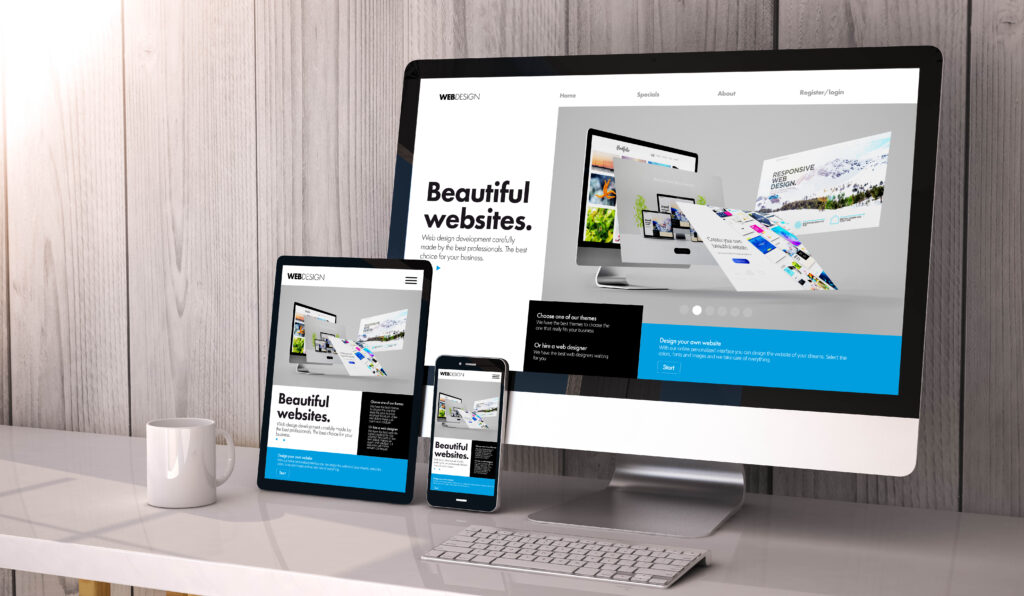An Introduction to No-Code Website Builders
In an era where digital presence is paramount, creating a website has become a necessity for businesses and individuals alike. However, the traditional method of website development, which involves coding, can be daunting and time-consuming for those without technical expertise. This is where no-code website builders come into play, revolutionising the way we approach web design.
No-code Website Builders are platforms designed to make website creation accessible to everyone. They offer a user-friendly interface that allows individuals to design and build websites without needing to understand programming languages. These platforms cater to both novices and professionals, providing tools that simplify the entire process.
One of the primary reasons no-code website builders have gained traction is their emphasis on simplicity. With intuitive drag-and-drop functionality, users can effortlessly add and organise elements on their site. This means you can design a website layout by merely dragging components like text boxes, images, and buttons into place. There’s no need to fiddle with HTML, CSS, or JavaScript.
Another significant benefit of these builders is the availability of pre-designed templates. These templates serve as a starting point, offering a variety of design options tailored to different industries and personal preferences. Whether you’re building a blog, an online store, or a portfolio, there’s likely a template that suits your needs. Customisation is straightforward, allowing you to adjust colours, fonts, and layouts to align with your brand identity.
Additionally, no-code Website Builders often come with integrated features that enhance functionality without requiring additional plugins or coding knowledge. For instance, many platforms include built-in SEO tools, e-commerce capabilities, and social media integrations. This all-in-one approach saves time and ensures that your website remains cohesive and functional.
Affordability is another appealing aspect of no-code website builders. Traditional web development can be costly, especially if you need to hire a professional developer. In contrast, most no-code platforms offer various pricing plans, often including web hosting and domain registration. This makes it a cost-effective solution for small businesses, entrepreneurs, and hobbyists.
Moreover, these platforms are designed to be flexible and scalable. As your website grows, you can easily add new features or modify existing ones. This adaptability ensures that your site can evolve with your needs without requiring a complete overhaul. Whether you’re expanding your blog or adding new products to your online store, no-code builders make it easy to implement changes.
Security is also a critical consideration, and many no-code website builders prioritise this aspect. They often include SSL certificates and regular updates to protect your site from potential threats. This provides peace of mind, knowing that your website is secure and compliant with industry standards.
Lastly, support and resources are widely available for users of no-code Website Builders. Many platforms offer extensive documentation, tutorials, and customer support to assist you throughout the website creation process. Whether you encounter a technical issue or need design advice, help is usually just a click away.
In summary, no-code website builders have democratised web design, making it accessible to a broader audience. By eliminating the need for coding knowledge, these platforms empower users to create professional and functional websites quickly and affordably. The combination of intuitive design tools, customisable templates, integrated features, and robust support makes no-code website builders an ideal choice for anyone looking to establish an online presence.
Key Features of No-Code Website Builders
One of the standout features of no-code Website Builders is the drag-and-drop functionality, which simplifies the design process. This allows users to easily arrange and rearrange elements on their website to suit their preferences. Another significant advantage is the availability of pre-designed templates and themes, which facilitate quick customisation. Users can choose from a wide variety of layouts that best suit their brand or personal style.
Additionally, these platforms often include built-in SEO tools, which assist in enhancing a website’s visibility on search engines without requiring advanced knowledge. These tools allow users to modify meta tags, descriptions, and keywords effortlessly. By following best practices for content optimisation, such as using clear headings and descriptive alt tags for images, users can further boost their site’s search engine ranking.
No-code Website Builders also offer integrated e-commerce capabilities, making it easier for businesses to set up online stores. Users can manage product listings, inventory, and payment gateways directly through the platform, streamlining the process of launching and maintaining an online shop. This integration eliminates the need for additional plugins or extensions, providing a seamless experience.
The affordability of no-code website builders is another key feature. Typically, these website builders are priced between $10 to $50 monthly, including web hosting and domain registration. This makes them an accessible option for many, from small businesses to individual entrepreneurs and hobbyists.
Flexibility is an important aspect of these platforms, allowing users to adapt their websites as their needs change. Whether it’s adding new features, updating existing ones, or completely overhauling the site’s design, no-code Website Builders provide the tools to make these modifications without starting from scratch.
Security is another critical consideration. Many no-code platforms include SSL certificates and regular updates to protect sites from potential threats. This ensures that websites remain secure and compliant with industry standards, providing peace of mind for users.
Moreover, no-code Website Builders often come with social media integration, enabling users to connect their websites with various social platforms seamlessly. This integration allows for easy sharing of content and can help drive traffic to the website from social media channels.
Another valuable feature is the availability of extensive documentation and customer support. Many platforms provide tutorials, FAQs, and direct support to assist users at every stage of their website creation journey. This support can be crucial, especially for those who are new to website building and may encounter technical challenges.
These builders also support multimedia integration, allowing users to embed videos, audio, and other multimedia elements effortlessly. This capability can enhance the overall user experience, making websites more engaging and interactive.
Finally, no-code Website Builders often include analytics tools, enabling users to track their website’s performance. These tools provide insights into visitor behaviour, traffic sources, and other vital metrics, helping users make informed decisions about how to improve their sites.
By offering a combination of ease of use, customisation options, built-in features, and support, no-code website builders empower users to create professional websites without needing technical expertise. This makes them an attractive option for a wide range of users, from business owners to bloggers and creatives.
How to Begin Customising Your Website
Choosing to use a no-code Website Builder can dramatically simplify the process of creating your online presence. Once you’ve selected a platform that aligns with your needs and offers the required features, the next step is to dive into customising your site.
The first major decision is to choose a template that aligns with your brand’s identity and functionality. Templates serve as a blueprint for your website, offering various layouts tailored to different purposes. Whether you’re building an e-commerce store, a personal blog, or a portfolio, there’s likely a template designed to suit your objectives. While choosing a template, think about the user experience you want to provide. A well-structured template can significantly enhance navigation and overall user satisfaction.
After selecting your template, it’s time to start personalising it with your content. Most no-code platforms offer an intuitive drag-and-drop interface, making it easy to add and arrange elements like text boxes, images, videos, and buttons. You can effortlessly adjust the layout by dragging these components into place, giving you full control over the website’s design without needing any coding skills. This flexibility allows you to tailor each page to meet specific needs and objectives.
Next, focus on the aesthetic aspects of your site. You can customise colours, fonts, and other visual elements to align with your brand identity. A consistent colour scheme and typography can make your website look more professional and cohesive. Most platforms also allow you to upload custom fonts and use brand-specific colours, ensuring your site truly represents your brand.
Incorporating multimedia elements can greatly enhance the visual appeal and functionality of your website. You can easily embed videos, audio files, and image galleries to create a more engaging experience for your visitors. These elements can be particularly useful for demonstrating products, sharing tutorials, or showcasing creative work. Make sure to optimise multimedia files to ensure quick loading times, which is crucial for maintaining user engagement.
The next step involves adding essential pages and features. Start with the basics: a homepage, an about page, a contact page, and any other sections relevant to your site. Many no-code builders offer pre-designed page layouts that you can modify to suit your needs. Don’t forget to include calls to action, like buttons or links, that guide visitors towards specific goals, such as signing up for a newsletter or making a purchase.
Integrated tools can further streamline the customisation process. For instance, many no-code platforms come with built-in SEO features, enabling you to optimise meta tags, descriptions, and keywords directly within the interface. This helps improve your site’s visibility on search engines without requiring specialised knowledge.
Social media integration is another vital feature. Most no-code builders allow you to link your website with various social media platforms, making it easier to share content and engage with your audience. Adding social media buttons or feeds can also encourage visitors to connect with you on different channels, broadening your reach.
As you customise your site, regularly preview how it looks on different devices. Responsive design ensures that your website is mobile-compatible and functions well on tablets and smartphones. A significant portion of web traffic comes from mobile users, so a responsive design is crucial for providing a seamless user experience across all devices.
Additionally, consider the interactive elements that can enhance user engagement. Forms, live chat features, and interactive maps are just a few examples of functionalities that can improve the overall user experience. These elements can be easily added and customised to fit your needs, providing an interactive and engaging platform for your visitors.
Personalising Your Site with Intuitive Tools
Customising your website with no-code builders has never been more accessible, thanks to the suite of intuitive tools these platforms offer. To start with, the drag-and-drop functionality simplifies the entire design process, enabling you to arrange content blocks like text, images, videos, and buttons effortlessly. This level of control allows you to tailor your site to meet your specific requirements, whether you’re crafting a professional portfolio, a blog, or an e-commerce store.
These no-code platforms offer a plethora of pre-designed templates and themes, each tailored to various industries and purposes. Choosing a template that aligns with your brand can save you time and provide a strong foundation for your site. Once you’ve selected a template, personalisation becomes straightforward. You can easily adjust colours, fonts, and layouts to match your brand identity, ensuring consistency across all pages. Many builders also allow for the integration of custom fonts and brand-specific colours, adding a unique touch to your site.
Another powerful feature is the seamless integration of multimedia elements. Whether you want to embed videos, audio files, or image galleries, these platforms make it easy. Embedding multimedia can significantly enhance the visual appeal and functionality of your website, creating a more engaging experience for visitors. For example, videos can be used for tutorials, product demonstrations, or personal introductions, while image galleries can showcase creative work or product portfolios. Ensure that these multimedia files are optimised for quick loading times to maintain user engagement.
Beyond aesthetics, adding essential pages and features is crucial. Start with the basics such as a homepage, about page, and contact page. Most platforms offer pre-designed page layouts that can be customised to suit your needs. Incorporate calls to action like buttons or links to guide visitors towards specific goals, such as signing up for a newsletter or making a purchase. This functional approach ensures that your website is not only visually appealing but also serves its intended purpose effectively.
Integrated tools further streamline the customisation process. For instance, many no-code platforms come with built-in SEO features, enabling you to optimise meta tags, descriptions, and keywords directly within the interface. This helps improve your site’s visibility on search engines without requiring specialised knowledge. Social media integration is another vital feature, allowing you to link your website with various social media platforms effortlessly. Adding social media buttons or feeds can encourage visitors to connect with you on different channels, broadening your reach.
Consider the interactive elements that can enhance user engagement. Forms, live chat features, and interactive maps are just a few examples of functionalities that can improve the overall user experience. These elements can be easily added and customised to fit your needs, providing an interactive platform for your visitors. For example, forms can be used for collecting user information or feedback, while live chat features offer real-time support and engagement.
Lastly, responsive design is crucial for ensuring that your website looks great on all devices. A significant portion of web traffic comes from mobile users, so it’s essential to ensure that your site is mobile-compatible. Most no-code builders automatically create responsive designs, but it’s always a good idea to preview how your site looks on different devices to make any necessary adjustments. This attention to detail will help provide a seamless user experience across all platforms, enhancing visitor satisfaction and retention.
Improving User Experience
User experience is a cornerstone of effective website design, and no-code Website Builders simplify this task with a range of intuitive features. One crucial aspect is ensuring easy navigation. A well-structured website helps visitors find the information they need quickly, enhancing overall satisfaction. Most no-code platforms offer menu and navigation options that can be customised to suit your website’s structure, ensuring a smooth journey for users.
Accessibility is another key element. It’s important to make your site usable for all visitors, including those with disabilities. No-code Website Builders often include features like alt text for images, keyboard navigation, and screen reader compatibility, making it easier to create an inclusive website.
Loading speed is a critical factor that can significantly impact user experience. Slow-loading pages can frustrate visitors and lead them to leave your site. No-code platforms typically offer optimised templates and efficient coding practices to ensure that your website loads quickly. Additionally, you can use their built-in tools to compress images and optimise multimedia files, further improving load times.
Interactive elements can greatly enhance user engagement. Features such as forms, live chat, and interactive maps not only make your site more dynamic but also provide valuable ways for visitors to interact with your content. These elements can be easily added and customised to fit your needs, offering a more personalised and engaging experience for your audience.
Content readability is also vital. No-code Website Builders provide various options for font types, sizes, and colours, allowing you to create a visually appealing and readable site. By choosing a clean, simple layout with plenty of white space, you can make your content more accessible and easier to digest.
Ensuring that your website is mobile-compatible is non-negotiable in today’s digital landscape. With a significant portion of web traffic coming from mobile devices, a responsive design ensures that your site functions well on smartphones and tablets. Most no-code platforms automatically create responsive designs, but it’s still important to preview your site on different devices to make any necessary adjustments.
Incorporating multimedia elements can make your site more engaging and visually appealing. Videos, audio files, and image galleries can enhance the overall user experience, making your site more interactive. Ensure that these multimedia elements are optimised for quick loading to maintain user engagement and satisfaction.
Lastly, the integration of social media can broaden your reach and enhance user experience. Most no-code builders allow you to add social media buttons or feeds, making it easier for visitors to share your content and connect with you on various platforms. This integration not only drives traffic to your site but also encourages user interaction, creating a more engaging and connected online presence.
SEO Optimisation with No-Code Platforms
Search engine optimisation (SEO) is crucial for ensuring your website appears in search results and attracts organic traffic. No-code platforms simplify this process by integrating a range of SEO tools directly into their interfaces. This allows users to enhance their website’s search engine ranking without needing in-depth technical knowledge.
One of the primary features offered by no-code platforms is the ability to customise meta tags, descriptions, and keywords. These elements are fundamental for SEO as they help search engines understand the content of your site. By accurately describing each page, you increase the likelihood of appearing in relevant search queries. Additionally, these platforms often provide guidance on the optimal length and format for these elements, ensuring you adhere to best practices.
Another valuable tool is the inclusion of SEO analytics, which can provide insights into your website’s performance. Metrics such as page load speed, mobile compatibility, and keyword effectiveness are crucial for understanding how well your site is optimised. By regularly reviewing these analytics, you can make informed adjustments to improve your site’s ranking.
Content optimisation is another area where no-code platforms excel. They often include features that allow you to use clear headings, subheadings, and descriptive alt tags for images. These practices not only improve accessibility but also help search engines index your content more effectively. Using relevant keywords throughout your text in a natural manner can further boost your SEO efforts.
URL structure is also an important factor in SEO. Many no-code platforms allow you to customise your URLs, making them clean and descriptive. This not only improves user experience but also makes it easier for search engines to crawl and index your site.
Internal linking is another strategy facilitated by no-code platforms. By linking relevant pages within your site, you can help search engines understand the structure and hierarchy of your content. This practice can improve your website’s overall SEO health and make it easier for visitors to navigate your site.
Moreover, many no-code platforms offer built-in XML sitemaps, which are essential for helping search engines discover and index your pages. An XML sitemap acts as a roadmap, guiding search engines to all the important pages on your website.
In conclusion, no-code platforms offer a comprehensive suite of SEO tools that can significantly enhance your website’s visibility. From meta tags and content optimisation to analytics and sitemaps, these features provide a robust foundation for achieving strong search engine performance. By leveraging these tools, you can ensure your site reaches its target audience effectively.



